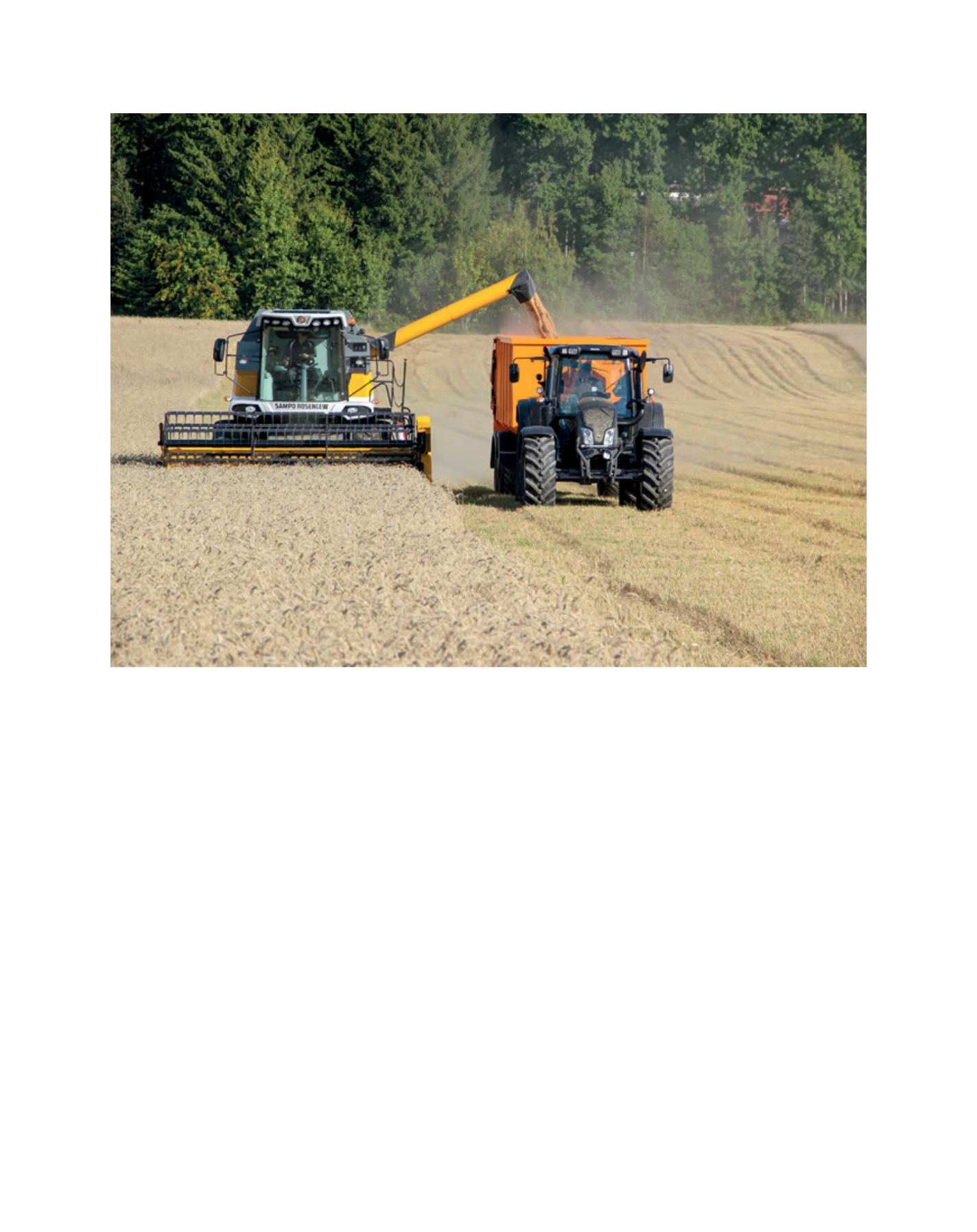

[
] 212
Image: Sampo-Rosenlew´s archive
It is vital to have appropriate machinery to manage the growing size of family farms in Finland
Today, forests have also gained value as a source of bioen-
ergy. About 80 per cent of Finnish renewable energy comes
from bioenergy. Biomass entrepreneurship has become a new
business model for farmers, supplying typically local custom-
ers with energy produced from wood fuels. Wood is a very
useful commodity; it can be used to replace non-renewable
materials and fuels.
The possibilities in bioeconomy are remarkable. The green
economy creates vast opportunities for farms and creates new
kinds of jobs and businesses in the rural areas. Farms are
being encouraged to invest in bioenergy production and new
bioenergy businesses are supported.
It is expected that innovations in the bioeconomy field will
boost sustainable development, employment and competi-
tiveness in the rural areas. By increasing energy efficiency
we are also increasing the profitability of agriculture and
reducing emissions.
The service sector is another rising business combined with
family farms, especially tourism. Rural areas that are close to
cities or tourist areas, such as ski resorts, profit most from the
different kind of services that farms and farmers can provide
to visitors. Finns highly value the clean natural landscape, and
this offers many seasonal activities – not to forget Lapland
and Santa Claus – both to Finnish and foreign tourists.
The tradition of cooperation is strong in the rural areas and
there are numerous networks among local entrepreneurs. For
example, cooperation between a local food producer and a
tourism entrepreneur brings them both benefits. Also, online
shopping has opened a wide market for small-scale producers.
Policies supporting family farming
Finnish agriculture’s competitiveness is supported as a part
of the EU agricultural policy. These supports have made it
possible to enlarge production volumes and to modernize
production. For example, an increasing amount of dairy cattle
are kept in loose housing where they can move around freely.
Finnish rural development is based on local needs.
The average age of a Finnish farmer is now 50.7 years. The
number of farmers under the age of 35 has decreased, but the
support given to farms in the process of generation is aimed
at keeping young farmers involved in agriculture. According
to many studies the support given to farms is significant in
developing activities and changes. Supporting the generation
shift in a farm is crucial. Up to 40 per cent of applicants for
this support would not have continued their parents’ work
on the farm had there not been support. This support has
lowered the average age of farmers. A fifth of new generation
farmers are women.
D
eep
R
oots
















